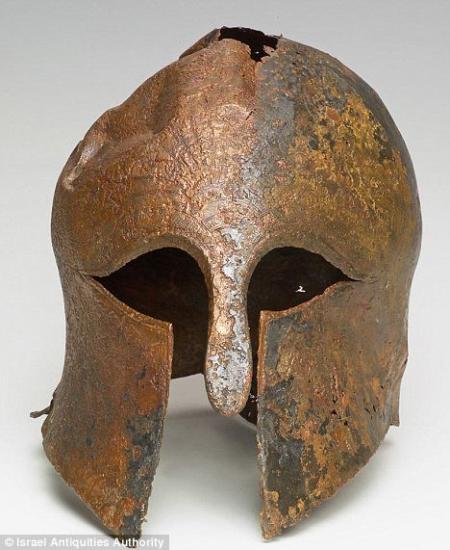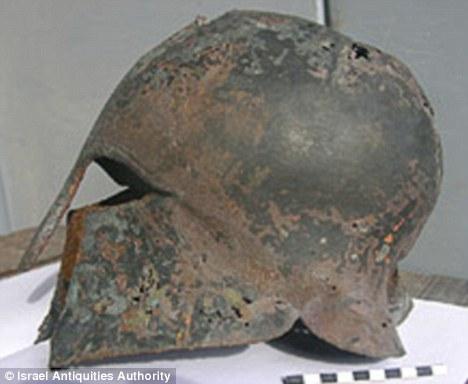Ted Thornhill
Source - http://www.dailymail.co.uk/sciencetech/article-2108250/Mystery-remarkable-2-600-year-old-Greek-warrior-helmet-seabed.html#ixzz1nnY0rGLx
Jacob Sharvit, director of the Marine Archaeology Unit with the Israel Antiquities Authority, said: ‘The gilding and figural ornaments make this one of the most ornate pieces of early Greek armour discovered.’
However, how it ended up on the seabed and who it belonged to remains unknown. A leading theory is that it belonged to a warrior stationed on one of the warships of the Greek fleet that fought the Persians, who ruled the country at the time.
Heads up: Covered with gold leaf, now somewhat corroded, this 2,600-year-old bronze helmet was discovered in the waters of Haifa Bay, in Israel
The helmet was found five years ago by a Dutch dredging ship and handed over to the Israel Antiquities Authority for examination.

It determined that it was fabricated by experts from a single sheet of bronze by means of heating and hammering.
This technique made it possible to reduce the weight of the helmet without diminishing its capacity to protect the head of the warrior.
The front of the helmet - the nose and cheek guards - is thicker than its back.

Fighting talk: It's likely that the helmet belonged to a mercenary Greek warrior
The front, above the nose guard and the forehead, is adorned with an engraved and hammered decoration of a peacock’s tail and snakes are incised above the eye slits.
The cheek guards are decorated with a pattern of lions, one on the right side and one on the left.
The helmet was probably that of a mercenary who was aboard a ship that traded with the nearby coastal settlement at Tell Abu Hawam, near the outlet of Nahal Kishon.
In excavations that were conducted at Tell Abu Hawam in 1932 to 1933 pottery vessels were found had been imported from Corinth.
In the excavations that were carried out there in recent years, on behalf of the University of Haifa and the Antiquities Authority, archaeological strata of a well-planned city were exposed which yielded a large quantity of Greek vessels.
Results of the find were presented to the Archaeological Institute of America last month, while the helmet is now on display at the National Maritime Museum in Haifa.